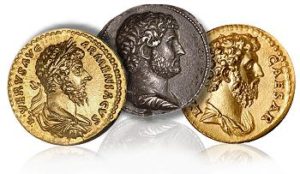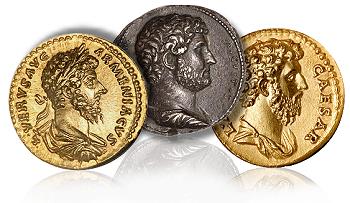The Roman economy never developed into anything terribly complex compared to modern economies. Ancient Rome was basically an agrarian and slave-based economy. Its main concern was feeding the vast number of citizens and legionaries who populated the Mediterranean region.
Ancient Rome Trade
Rome’s economy remained focused on farming and trade. Agriculture and trade dominated Roman economic fortunes, only supplemented by small-scale industrial production.
The most ancient Roman currency and the economy was pastoral and based on bartering. The early Romans were Shepherds and sheep farmers. Their currency was based on the exchange of goods such as cattle.

Although bartering often used in tax collection, Rome had a very developed coinage system, with brass, bronze, and precious metal coins in circulation throughout the Empire and beyond. Some of the coins have been discovered in India.
As Rome grew it took over the land and commerce of its neighbors. It is said that the Romans needed women to populate the new city and the neighboring Sabines were an obvious target. The women were taken, a fight ensued and the two sides eventually came to an agreement.
Throughout the period of growth of the empire the where the Emperors used to conquer the territories provided the Romans with lots of wealth. Because of that direct taxation was removed and the civil wars could be financed. Thus while the dominions grew Rome could finance itself. The growth of learning and of the organization led to further success.

The Roman Empire was slowly losing its economic grasp to the end of the Pax Romana. The Roman world was changing for the worst, and there was nothing anyone could do. Diocletian and Constantine were the two emperors who in 284 A.D started the efforts to turn around the Empire’s economic troubles.
Importance of Roman Economy
The importance of industry and manufacturing was comparatively light to that of agriculture. The growth and influence of the Empire cannot be underestimated, however. The largest industry in ancient Rome was mining, which provided the stones for the enormous building projects and metals for tools and the weapons that conquered the western world.

Greece and northern Italy provided marble for the buildings that awed the ancients and modern people alike. Large quantities of gold and silver were mined in Spain to mint coins and create jewelry, while mines in Britain produced iron, lead, and tin for weapons. Cities and towns throughout the empire established small-scale manufacturing plants which turned out hand-made pottery, glassware, weapons, tools, jewelry, and textiles.
More info on- Rome society, government, empire values




